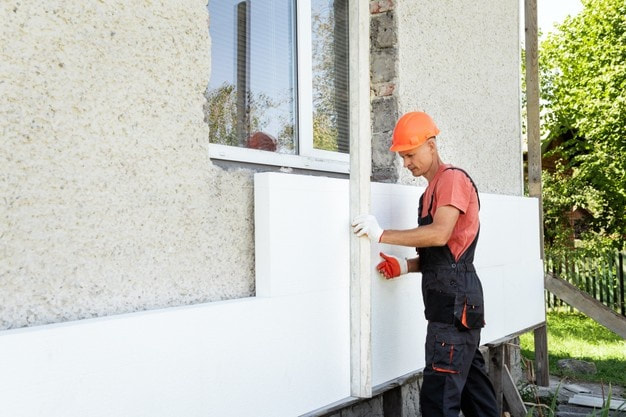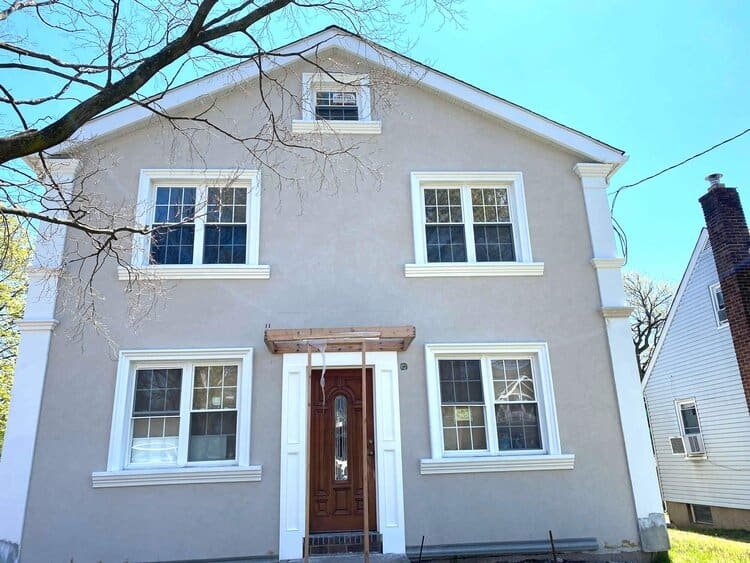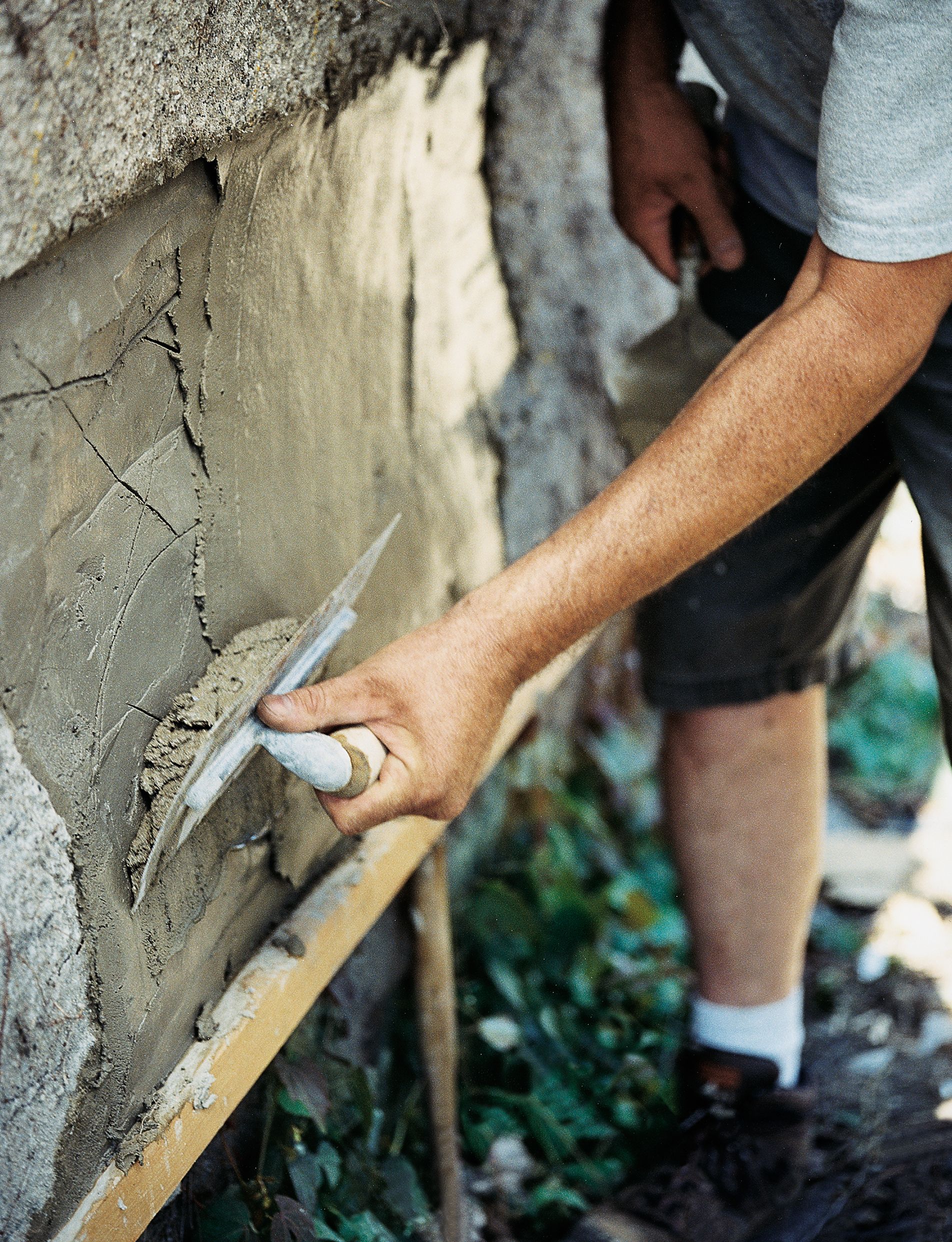Discovering the Flexibility of Stucco in Modern Design
Stucco has actually long been identified for its aesthetic appeal and versatility, yet its function in modern style warrants a better evaluation. By exploring its ingenious applications, from striking exteriors to energy-efficient designs, one can value just how stucco is redefining the limits of building expression.
Historic Importance of Stucco
The historic importance of stucco is profound, as it has actually played a critical duty in building techniques throughout numerous cultures for centuries. Coming from in ancient people, stucco was used by the Egyptians and Greeks as a versatile and sturdy surface for both exterior and interior surfaces. Its adaptability to various environments and capacity to imitate more pricey products made it a popular selection.
In the Roman era, stucco came to be a main attractive element, made use of extensively in public structures, suites, and temples. The Romans refined the application strategies, enabling for detailed styles and relief sculptures. Throughout the Renaissance, stucco experienced a rebirth, particularly in Italy, where it was utilized in ornamental details and intricate facades, showcasing the artistry of the period.

Modern Applications in Design
Stucco has actually found restored significance in contemporary design because of its flexibility and visual allure (stucco contractor). This traditional material is increasingly used in contemporary design, bridging the gap between modern and traditional looks. Architects and developers value stucco for its versatility, permitting it to be applied in numerous designs-- from minimal frameworks to specify Mediterranean styles
In residential projects, stucco provides a tidy, seamless surface that boosts the aesthetic communication of facades. Its ability to adjust to various forms and surface areas makes it a perfect option for both new constructions and remodelling projects. Furthermore, stucco's longevity and low maintenance needs add to its expanding popularity in metropolitan setups, where durable materials are vital.
Business applications have also accepted stucco, with numerous services choosing this product to develop inviting and unique stores. Using stucco in public structures, such as schools and community centers, showcases its capacity for developing aesthetically attractive settings while supplying superb insulation buildings.
Color and Structure Technologies
Discovering shade and structure developments in stucco has actually opened up new avenues for architects and developers, enhancing the material's visual influence in contemporary construction. Current advancements in pigment technology have permitted a bigger spectrum of shades, enabling designers to produce striking facades that integrate seamlessly with their environments or stand apart as strong architectural declarations. This adaptability in shade choice provides designers the ability to stimulate certain emotional responses and harmonize with regional looks.
Texture technologies have in a similar way transformed stucco applications. Strategies such as shoveling, splashing, and stamping have led to varied surface coatings, ranging from smooth and fine-tuned to sturdy and tactile. These variants not only contribute to the structure's personality but likewise play an important company website duty in light interaction, boosting the visual depth and dimensionality of surface areas.
In addition, the introduction of synthetic stucco options has actually expanded layout opportunities, offering improved resilience and weather condition resistance while keeping aesthetic charm. As engineers remain to explore innovative color combinations and distinctive finishes, stucco stays an essential aspect in modern-day architecture, showcasing the material's adaptability and classic importance in contemporary style.
Sustainability and Power Effectiveness
Innovations in shade and texture have not just enhanced the visual allure of stucco yet additionally led the means for greater focus on sustainability and power efficiency in contemporary style. As environmental concerns end up being progressively noticeable, the building industry is turning its attention to products that add favorably to environmental balance.
Stucco, composed mainly of natural materials such as sand, lime, and concrete, provides a lasting option to even more resource-intensive structure materials. Its durability and longevity decrease the requirement for regular substitutes, thus lessening waste and source consumption gradually. In addition, modern-day stucco formulas frequently include energy-efficient ingredients that enhance insulation homes, reducing heating & cooling prices for buildings.
The reflective qualities of stucco can also be crafted to mitigate warm absorption, adding to cooler indoor environments and less dependence on artificial environment control systems. By advertising energy preservation and decreasing the carbon impact of structures, stucco lines up with the concepts of sustainable style. As designers and home builders embrace environment-friendly methods and innovative strategies, stucco sticks out as a accountable and versatile selection in modern layout.

Instance Studies of Stucco Projects
The versatility visit here of stucco as a building material is exemplified in various effective building projects that highlight its functional and visual advantages. One significant example is the improvement of the historical Casa de la Guerra in Santa Barbara, California. Using stucco not just protected the structure's Spanish Colonial Resurgence style but likewise enhanced its durability and weather condition resistance, guaranteeing long life while preserving architectural stability.
Another engaging case is the modern residential task, the Cactus Home in Scottsdale, Arizona. stucco contractor. This striking home features a smooth stucco surface that harmonizes with the bordering desert landscape. The stucco's light color reflects warmth, contributing to energy performance, while the distinctive surface areas include visual passion
Additionally, the Kings Cross redevelopment in London showcases the flexibility of stucco in urban settings. The application of stucco on modern-day mixed-use buildings produces a natural visual that respects historic context while welcoming contemporary layout principles.
These case researches demonstrate just how stucco can serve numerous architectural functions, from conservation and energy performance to aesthetic enhancement, making it a functional choice in modern-day architecture.
Verdict
 In conclusion, stucco's historical significance and modern versatility make it a valuable material in modern architecture. As demonstrated with different case studies, stucco proceeds to play a crucial duty in forming the building landscape of the contemporary era.
In conclusion, stucco's historical significance and modern versatility make it a valuable material in modern architecture. As demonstrated with different case studies, stucco proceeds to play a crucial duty in forming the building landscape of the contemporary era.
In conclusion, stucco's historical importance and modern flexibility make it an important material in contemporary architecture.